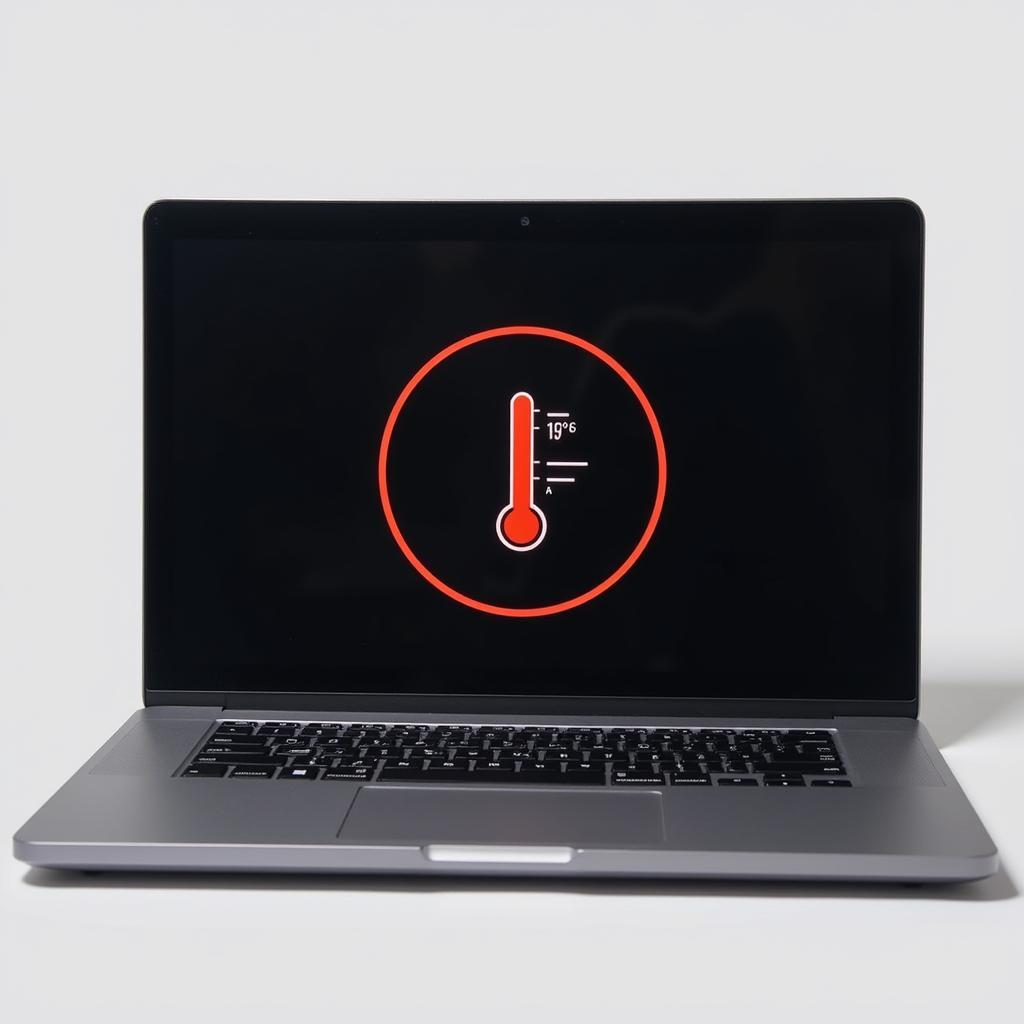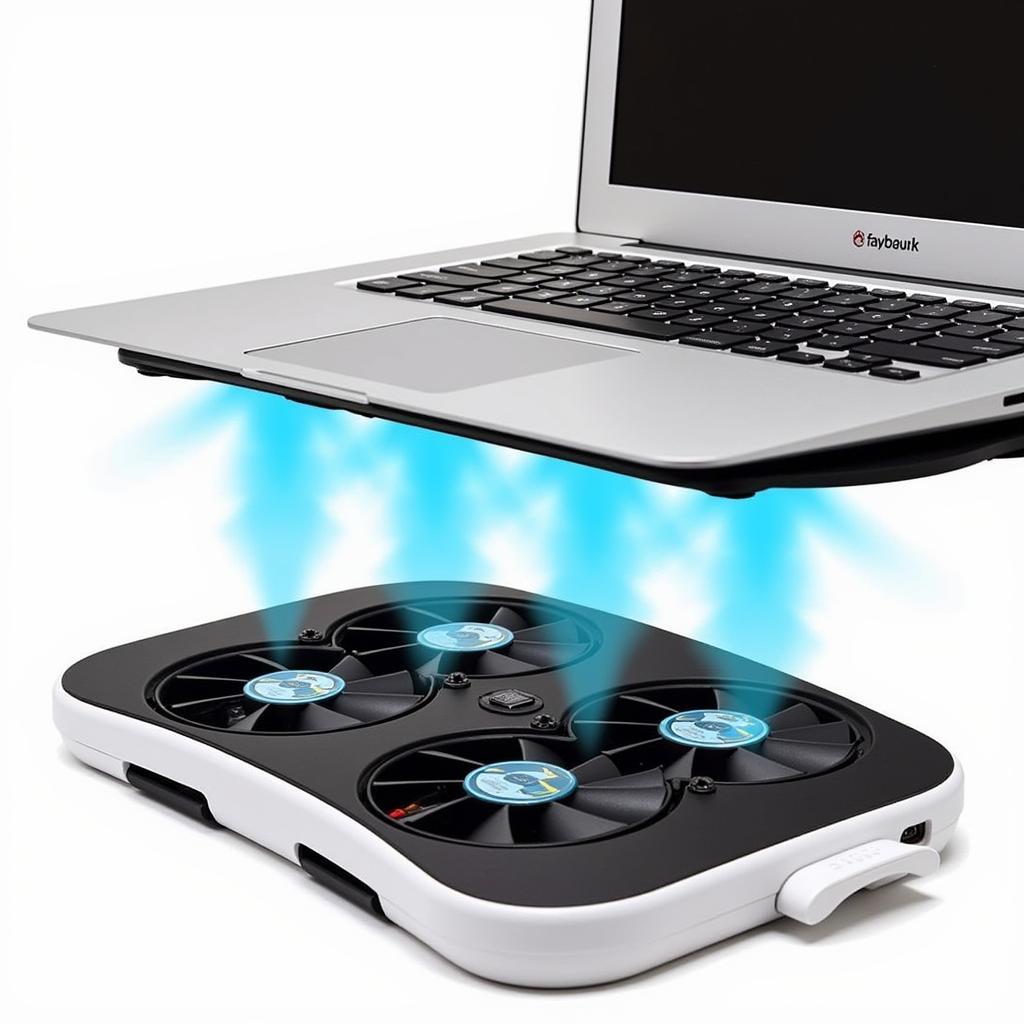A laptop that’s overheating can be a major problem, leading to performance issues, system crashes, and even permanent damage. One common sign of overheating is when the laptop fan doesn’t speed up even when the device is hot. This can be incredibly frustrating, especially when you’re in the middle of important work or enjoying a gaming session.
 Laptop overheating warning sign
Laptop overheating warning sign
Understanding Your Laptop’s Cooling System
Before we dive into troubleshooting, it’s helpful to understand how your laptop’s cooling system works. Most laptops use a combination of heat sinks, fans, and vents to dissipate heat generated by the processor, graphics card, and other components.
- Heat Sink: A metal component that absorbs heat from the processor or graphics card.
- Fan: Draws cool air from outside the laptop and blows it over the heat sink, carrying the heat away.
- Vents: Openings on the laptop’s case that allow the heated air to escape.
When your laptop gets hot, the fan is designed to spin faster to increase airflow and cool down the system. If the fan isn’t speeding up, it means there’s a problem somewhere in the cooling system or with the software that controls it.
Why Your Laptop Fan Isn’t Speeding Up
There are several reasons why your laptop fan might not be spinning faster when it’s hot:
1. Dust Accumulation
One of the most common culprits is dust buildup inside the laptop. Dust can clog the fan blades, vents, and heat sink fins, preventing proper airflow.
Solution: Cleaning your laptop’s cooling system regularly can help prevent this issue. You can use compressed air to blow out dust from the vents and fan.
2. Fan Failure
Like any mechanical component, laptop fans can fail over time. If you hear strange noises coming from your fan or if it’s not spinning at all, it might be time for a replacement.
Solution: Replacing a laptop fan usually requires opening up the laptop, so it’s best to consult a professional technician.
3. Outdated or Corrupted Drivers
The software that controls your laptop’s fan speed is called a driver. If the driver is outdated or corrupted, it might not function properly, causing the fan to malfunction.
Solution: Updating your laptop’s BIOS and drivers, especially those related to the motherboard and thermal management, can often resolve driver-related fan issues.
4. BIOS Settings
The BIOS (Basic Input/Output System) controls your laptop’s hardware on a fundamental level. Some BIOS versions have settings that allow you to adjust the fan speed manually.
Solution: Access your BIOS settings (usually by pressing F2 or Del during startup) and check if there are any options related to fan control.
5. Overheating Issues
In some cases, the fan might not be the problem at all. If your laptop is consistently overheating, it could indicate a more serious issue, such as a failing CPU or GPU.
Solution: Monitoring your laptop’s temperature using hardware monitoring software can help you identify if specific components are overheating.
Expert Insights
“It’s crucial to address laptop overheating proactively,” says James Peterson, a senior hardware technician at TechSolutions Inc. “Ignoring the problem can lead to costly repairs or even data loss. Regular cleaning and proper ventilation are key to a healthy laptop.”
 Laptop cooling pad with fans
Laptop cooling pad with fans
Conclusion
A laptop fan that’s not speeding up when hot can be a symptom of various underlying issues, from simple dust accumulation to more complex hardware failures. By understanding the potential causes and following the troubleshooting steps outlined above, you can often diagnose and fix the problem. If you’re unsure about any step or if the issue persists, don’t hesitate to seek help from a qualified technician. Remember, a cool laptop is a happy and efficient laptop.


